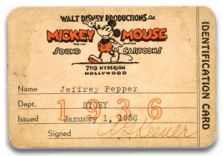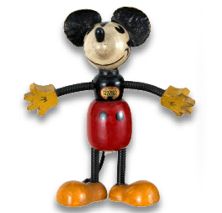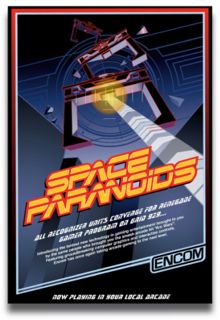Living in the wilds of North Carolina affords little access to much of what my big city Disney enthusiast cousins frequently take for granted. Thus to some, my very passionate discussion today about a trio of recent Disney-related documentaries is likely old news. Walt and El Grupo, The Boys: The Sherman Brothers' Story and Waking Sleeping Beauty have all previously graced theater screens in major markets such as New York and Los Angeles, and have been critical darlings at numerous high profile film festivals. But their collective release this week in DVD editions makes them in fact very new to me and no doubt many others.
Walt and El Grupo
Walt Disney's South American excursion of 1941, an intended goodwill tour made at the behest of the U.S. government, has generally gone unexamined and undocumented. It recently began to emerge from that shadow of negligence, due primarily to the release of J. B. Kaufman's excellent and incredibly comprehensive book South of the Border with Disney, and Ted Thomas' equally impressive documentary film Walt and El Grupo.
Thomas, son of veteran animator Frank Thomas, is not without Disney documentary experience. He wrote and directed the very well-received 1995 film Frank and Ollie, an entertaining and often sentimental chronicle of the decades-long friendship between his father and fellow Disney animator Ollie Johnston. The younger Thomas retains a similar personal connection to Walt and El Grupo; Frank Thomas was among the Disney staffers and artists that accompanied Walt on the 1941 Latin America trip.
 Thomas essentially recreates the 1941 journey, revisiting many of the locations that the studio delegation originally found their way to. The story of El Groupo is told primarily through recollections of family members, and also recitations of passages from many of the group's own private letters and correspondences. But Thomas smartly balances that content with interviews of many of the native South Americans that El Grupo encountered in their travels. One particular sequence that was especially moving: the son of Jorge Delano describes the fast friendship struck up between Walt and his father in Chile and how Walt ultimately paid tribute to this in the Pedro the Plane sequence in Saludos Amigos.
Thomas essentially recreates the 1941 journey, revisiting many of the locations that the studio delegation originally found their way to. The story of El Groupo is told primarily through recollections of family members, and also recitations of passages from many of the group's own private letters and correspondences. But Thomas smartly balances that content with interviews of many of the native South Americans that El Grupo encountered in their travels. One particular sequence that was especially moving: the son of Jorge Delano describes the fast friendship struck up between Walt and his father in Chile and how Walt ultimately paid tribute to this in the Pedro the Plane sequence in Saludos Amigos.The film is dense with archival film footage and vintage photographs which have been thoughtfully and carefully enhanced and expanded via current digital technologies. A bonus feature on the DVD describes the technique as "photos in motion," wherein the filmmakers essentially deconstruct the source material and rebuild the images in 3-dimensional layers. The result is an artistically dynamic presentation that remains subtle in execution yet often breathtaking when you least expect it. Especially effective are moments when Thomas dissolves between vintage photos and contemporary views that seem to match up almost exactly to the pixel.
In an interesting juxtaposition, Saludos Amigos, the first animated feature that resulted from the trip, is included as a bonus feature. Other supplemental features include an audio commentary by Thomas and author J.B. Kaufman, additional footage and material found under the heading From the Director's Cut, and original theatrical trailers for both Saludos Amigos and The Three Caballeros.
The Boys: The Sherman Brothers' Story
Cousins Jeffrey Sherman and Gregory Sherman showcase their famous fathers, Robert Sherman and Richard Sherman respectively, in The Boys: The Sherman Brothers' Story. The film is indeed a loving testament to Disney's most famous and prolific musical composers, but it distinctly and very honestly also presents the somewhat darker side of the siblings' long-running professional partnership.
The younger Shermans, both entertainment industry professionals, have crafted an engaging and frequently poignant chronicle of conflict and collaboration heretofore largely undocumented. The brothers' almost unparalleled legacy of professional successes largely hid from view decades of personal conflicts and a long term estrangement that is still essentially in place. Greg and Jeff gently peel back the layers of the relationship and reveal two individuals, much lauded by peers and other professionals, deeply loved by family and friends, but ultimately unable to reconcile despite a much celebrated common history. Despite such sad undertones and occasional heart-wrenching moments, the film is for the most part a celebratory experience. Numerous happy moments are well-featured, represented most distinctly by their initial meetings with Walt Disney in the late 1950s and later Oscar wins for Mary Poppins in 1966.
There is plenty of new information and material presented in The Boys to satisfy even the most seasoned of Disney enthusiasts and historians. Jeff and Greg recruited an impressive array of contributors including Roy Disney, Julie Andrews, Dick Van Dyke, Angela Lansbury, and Stephen Schwartz, just to name a few. I was personally delighted to learn of the brothers' close connection to Disney veteran Roy Williams who had long occupied an adjacent office in the studio's animation building. The former "Moose-keter" would frequently slip quickly-sketched cartoons under their office door. These gags were inspired by collaborative vignettes and office activity by the brothers that Williams would often overhear due to the close proximity. A bonus feature of the DVD presents many of these drawings, with one particular set of sketches involving a wastebasket fire being especially hilarious.
In approaching The Boys, I had expected a fairly generic biographical profile, generally akin to what you would find buried within the bonus features of another DVD. I quickly learned otherwise; it is an amazing and wonderful film, crafted with much love and care. Jeff and Greg had hoped that the making of the film might serve to reconcile their fathers on some level. But they themselves admit near the end of the film that, "In life, not everything turns out like a Sherman Brothers musical." It is a heartbreaking moment.
(I'd like to express special congratulations to our good friend and long-term 2719 Hyperion cheerleader Jeff Kurtti, who served as a Co-Producer on The Boys: The Sherman Brothers' Story.)
Waking Sleeping Beauty
The Disney animation renaissance of the late 1980s and early 1990s was a heady time for Disney fans. The joys of Who Framed Roger Rabbit and The Little Mermaid ultimately escalated into near euphoria with the over the top creative and commercial successes of Beauty and the Beast, Aladdin and The Lion King. It was therefore not very difficult for a Disney fan such as myself to at that time, associate an idealistic and happy environment with the Walt Disney Company and its animation department. I have long since set aside that rosie and very unrealistic notion. But even then, Don Hahn's and Peter Schneider's account of that time period in the film Waking Sleeping Beauty has forged within me an even more disquieting and somewhat cynical perspective on much of those events. And I'm not sure that was their intention in making the film.
Let me be clear, I loved Waking Sleeping Beauty. I found it informative, exceptionally well-crafted and distinctly compelling. The reconstruction of events within the halls of Disney animation from 1984 through 1994 is quite revealing and very well presented. They notably throw out the talking head documentary model and exclusively use existing footage (vintage interviews, documentary footage, newscasts, press material and home movies) supplemented by Hahn's own narration and audio-only commentary from a number of key figures such as Michael Eisner, Jeffrey Katzenberg and Roy E. Disney. But although the intention is to showcase the creative and commercial revival of the art form that is Disney animation, it very, very often instead highlights the quite ugly side of Hollywood corporate governance where politics and egos are quick to overshadow just about everything else. Many reviewers and pundits have criticized the film for potentially pulling its punches; I frankly was amazed that it probed as deep as it did. Hahn and Schneider very much acknowledge that a "warts and all" philosophy was integral to the project, but to an outsider such as myself it proves at times quite jarring and unsettling.
The film is a distinct juxtaposition of triumphs and tragedies. The hope of rebirth instilled by the installation of Michael Eisner and Frank Wells as new company leaders is quickly dispelled when the Animation department is literally removed from the studio lot and relocated to Glendale. The impending success of Beauty and the Beast is sadly contrasted with Howard Ashman succumbing to death caused by the AIDS virus. And the penultimate success of the era as quantified by The Lion King is quickly diminished by the tragic death of Frank Wells and the subsequent political squabbling of Eisner, Katzenberg and Roy E. Disney. The film in fact presents a low key but still very disturbing ego-driven interaction between Eisner and Roy that unbelievably happened at a memorial service for Frank Wells. Especially revealing are generally cold and insincere videotaped vignettes from Eisner, Katzenberg and Roy intended to be used as expressions of congratulations to the Animation department upon the release of The Lion King. Yes, most definitely "warts and all." Yet, I guess perhaps the positive message that the filmmakers attempt to convey, is that Disney animation reinvented itself despite all this.
Initially, that seemed an adequate but still somewhat empty consolation. After watching Waking Sleeping Beauty, I found myself feeling a number of different emotions, but inspired and uplifted were not among them. Yet after a healthy dose of hindsight, I slowly came around to a more positive perspective. What also helped were a number of enlightening bonus features, most especially one entitled Why Wake Sleeping Beauty? where both Hahn and Schneider elaborate on their motives and inspirations for making the film. As they so note, Waking Sleeping Beauty is an honest and powerful documentation of a true renaissance era, and a well deserved recognition of all those individuals who participated and made it possible. In the end, I must say that I wholly agree with that assessment.























1 comments:
Jeff,
I was blown away by these films when I saw them on DVD last week. The Boys was especially heartbreaking and, like you, I was somewhat rudely awakened by Waking Sleeping Beauty. Walt & El Grupo was interesting, but not filled with the poignancy and pathos I saw in the other two films. Thanks for the great review - hopefully more people will experience these great films.
For fun, check out the ratings on these films and see how they earned them. I didn't know a film could be upgraded to PG for "Historical Smoking." I've got to say, that made me laugh.
Post a Comment